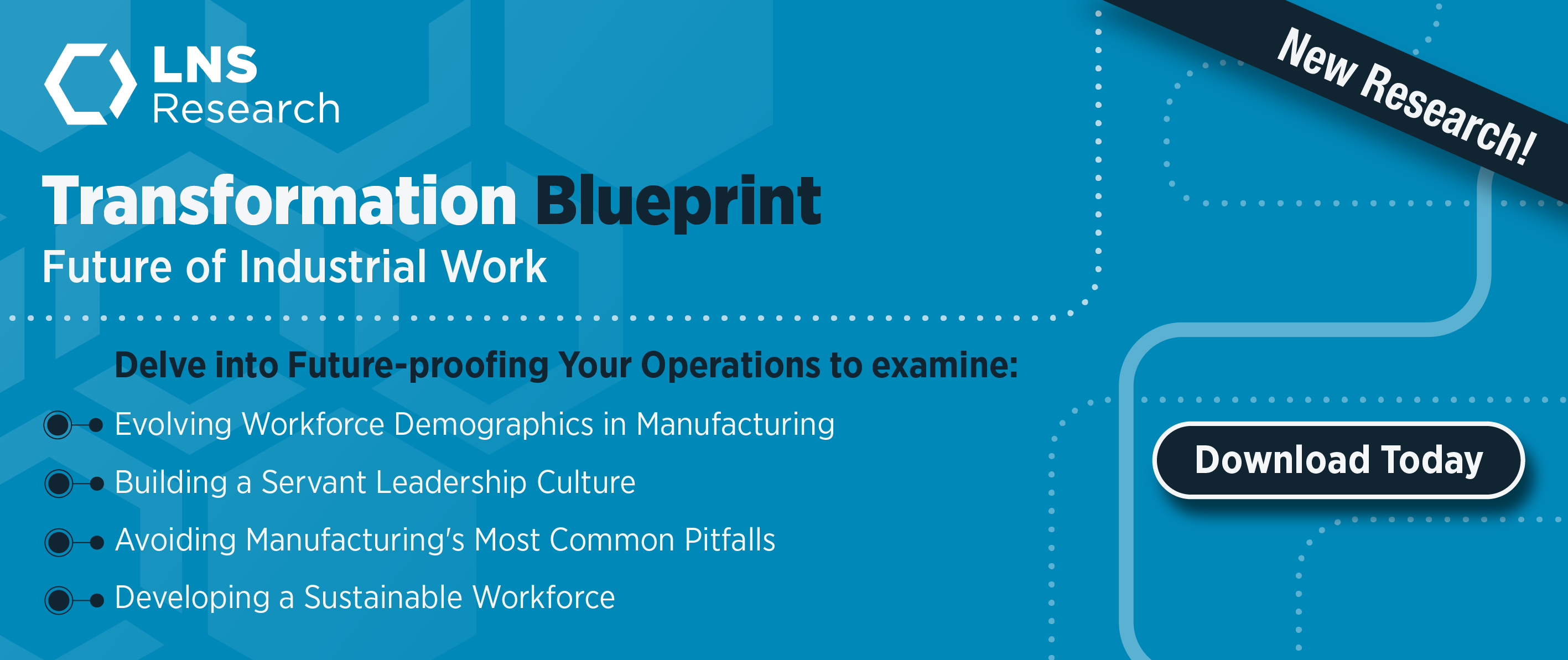Augmented Reality (AR) is no longer a solution looking for a problem to solve. With over half of manufacturers having already adopted AR, LNS Research found that most of this adoption has been among Future of Industrial Work (FOIW) Leaders, who are 11 times more likely to widely deploy the technology than Followers. Organizations are realizing dramatic value from an extended dynamic, personalized content, training, and skills development use cases to work execution, support, and real-time process monitoring on the factory floor.
What has driven this shift in the fortunes of AR?
First, there’s the move away from glasses and goggles, which still haven’t left the pilot phase, instead focusing on phones and tablets, which everyone has at home and wants to use in manufacturing.
Second, AR is no longer the lead entrée but rather embedded into the capabilities offered by application providers, namely Connected Frontline Workforce (CFW) solutions. These applications focus on specific user personas and use cases, allowing AR to play to its strengths by improving and transforming the user experience. AR does this by  accelerating learning, development, upskilling, collaboration, and ongoing performance excellence.
accelerating learning, development, upskilling, collaboration, and ongoing performance excellence.
This blog offers insights into the business value that followers are missing out on. More importantly, it will help build the case for adopting essential technology for the Future of Industrial Work.
The Role of Augmented Reality in Manufacturing
Augmented reality (AR) is playing an increasingly vital role in manufacturing as industrial organizations recognize the critical need to adopt innovative technologies. Manufacturers who have traditionally been hesitant to adopt new approaches will need to realize the demand for innovation requires a change in mindset. Naysayers who falsely believe AR requires wearables and is costly will most likely be the last to realize the potential business value.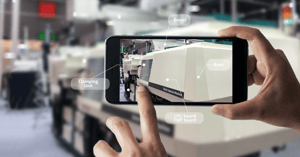
There are a variety of device types that enable AR solutions to overlay digital information onto the physical environment. This allows employers to provide virtual work instructions directly at the point of task execution, improving their efficiency and accuracy on the job. AR technology modernizes boring training, streamlines inefficient onboarding processes, and empowers real-time collaboration opportunities.
AR's integration of virtual models with real-world assets unlocks numerous opportunities to improve manufacturing efficiency and effectiveness. For many, emerging technology is becoming an expectation rather than a differentiator. Rapid advances in AR and its increased adoption have reduced the cost and increased the flexibility of AR-enabled technology.
The Connected Frontline Workforce and AR
With the number of "digital natives" increasing, the demand for newer, innovative technology is growing stronger. Newer generations demand safer work environments with more autonomy from employers and technology. Simulations and immersive training opportunities can accelerate knowledge capture and transfer, while on-the-job applications support employee learning, development, and hazard recognition.
Leaders find AR-enhanced solutions particularly attractive for enabling a Connected Frontline Workforce. The business case justification continues to grow as CFW  initiatives rapidly expand across use cases. Nearly 70% of manufacturers have quantified bottom-line value from CFW pilots.
initiatives rapidly expand across use cases. Nearly 70% of manufacturers have quantified bottom-line value from CFW pilots.
Connected Frontline Workforce applications with AR capabilities have the unique ability to combine both the physical and the digital worlds on the production floor. Business benefits include upskilling the workforce, improving safety performance, and increasing productivity. For the workforce, AR-enabled CFW applications improve the onboarding experience for new employees and reduce the burdens placed on experienced workers.
How Adopting AR Enables Virtual Operations Centers
LNS Research aims to guide manufacturing executives in navigating the journey from vision to value. Leaders use AR-enabled solutions to adapt to changing workforce dynamics and prepare for the future of industrial work where virtual subject matter experts (SMEs) are essential to support a global footprint. For manufacturers navigating available solutions, let's explore how AR is being adopted with respect to three manufacturing capabilities critical to enabling the new organizational model needed:-1.png?width=550&height=424&name=Connected%20Frontline%20Workforce%20(CFW)-1.png)
-
-
-
 Digital knowledge management enables employers to engage experienced employees in transferring their knowledge to new employees by creating dynamic work instructions (e.g., enriched training, especially for simulating infrequent or non-routine operating conditions that impact safety).
Digital knowledge management enables employers to engage experienced employees in transferring their knowledge to new employees by creating dynamic work instructions (e.g., enriched training, especially for simulating infrequent or non-routine operating conditions that impact safety).
-
Work execution support visualizes the execution of work with step-by-step guidance. It provides actionable insights through connected data sources (e.g., monetize Digital Twins and provide up-to-the-minute data).
-
Remote collaboration creates a space where employees can quickly get the support needed and solve problems faster from wherever the source of information or subject matter expert (SME) physically resides (e.g., enabling asset monitoring from Virtual Operations Centers (VOCs) and collaborating with production in real-time).
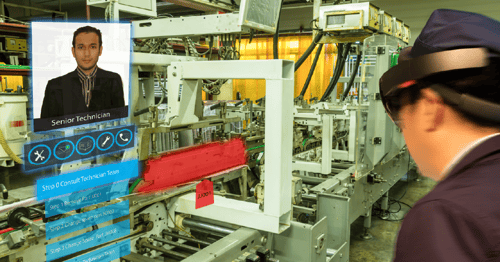
Several (countless) products offer AR solutions for manufacturing. The table below provides a high-level overview of vendors and the use cases enabled by these AR experiences. This list is in alphabetical order and does not represent all the features and functionality of each vendor.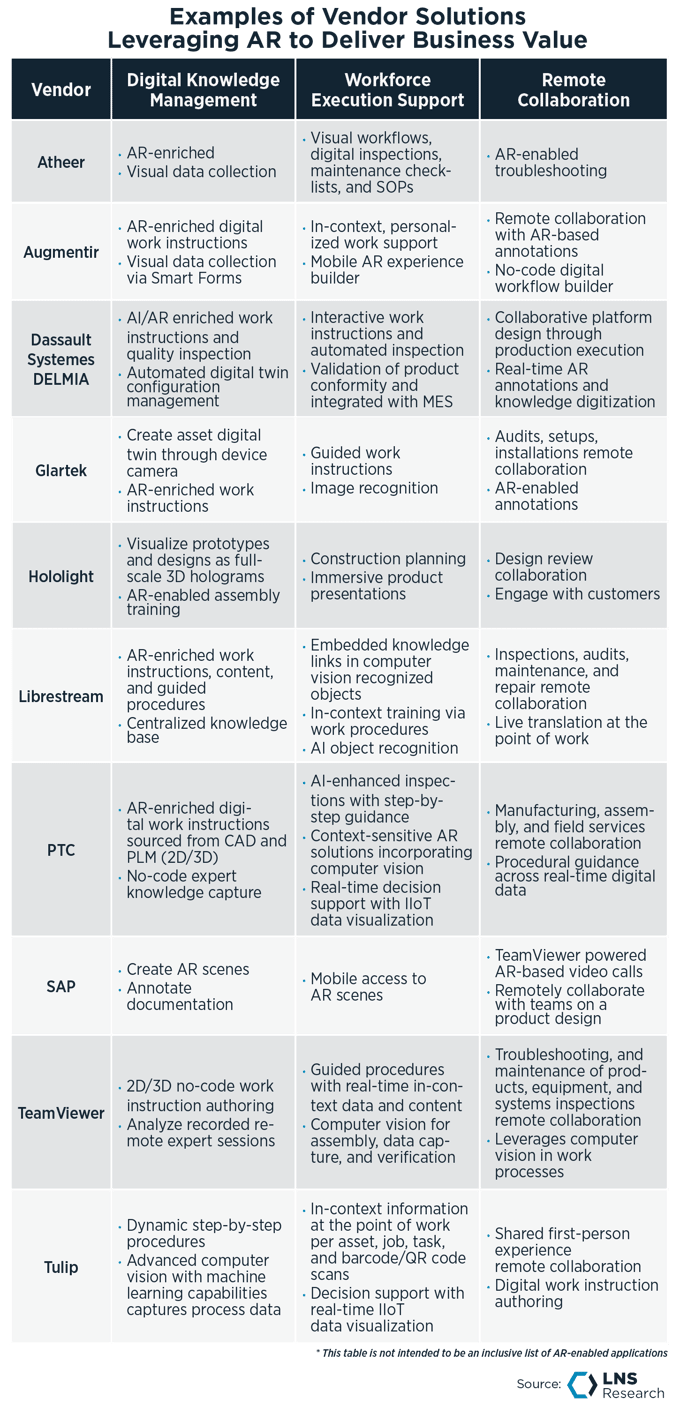
Recommendations
The fact is that manufacturers investing in AR technology are realizing significant and tangible business value. Many believe AR will replace traditional 2D digital interactions by offering enhanced experiences. For instance, many consumers already take their business to those offering AR shopping experiences.
Here's what manufacturers must accept moving forward:
-
-
-
 There are clear use cases and users for AR technology within manufacturing operations. FOIW initiatives provide a clear example of where industrial organizations can deploy AR technology. Manufacturers are proving the value of AR by transforming the end-to-end employee lifecycle to better compete for future talent.
There are clear use cases and users for AR technology within manufacturing operations. FOIW initiatives provide a clear example of where industrial organizations can deploy AR technology. Manufacturers are proving the value of AR by transforming the end-to-end employee lifecycle to better compete for future talent.
-
Manufacturing Leaders are already delivering significant business value. There has never been a greater need to reassess the technology toolkit. AR-embedded CFW solutions enable VOCs to collaborate remotely with SMEs to support the factory floor and quickly overcome challenges.
-
Strategic partners can facilitate faster deployment and quicker time to value. Manufacturers should test their current selection process against the following table to identify the right solution provider for the company's long-term Industrial Transformation vision. We expect solution providers will use embedded AR technology to create user experiences and applications that might enable CFW as the market landscape evolves (e.g., offerings from Industrial Data and Industrial Application Platform providers).
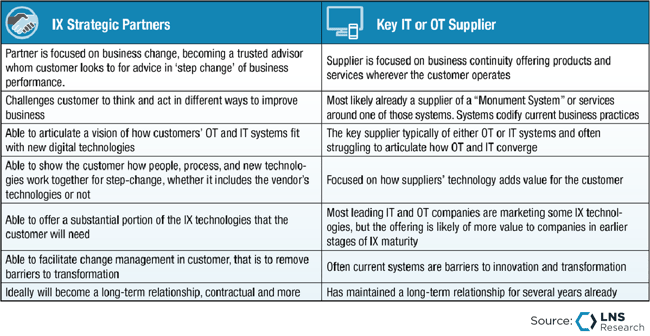
 Technology vendors should realize that as major players significantly expand their AR investments (e.g., Apple Vision Pro), the expectation for offerings that provide emerging technology will only become stronger. Companies should evaluate current product offerings and adjust the roadmap accordingly to maintain competitiveness.
Technology vendors should realize that as major players significantly expand their AR investments (e.g., Apple Vision Pro), the expectation for offerings that provide emerging technology will only become stronger. Companies should evaluate current product offerings and adjust the roadmap accordingly to maintain competitiveness.
